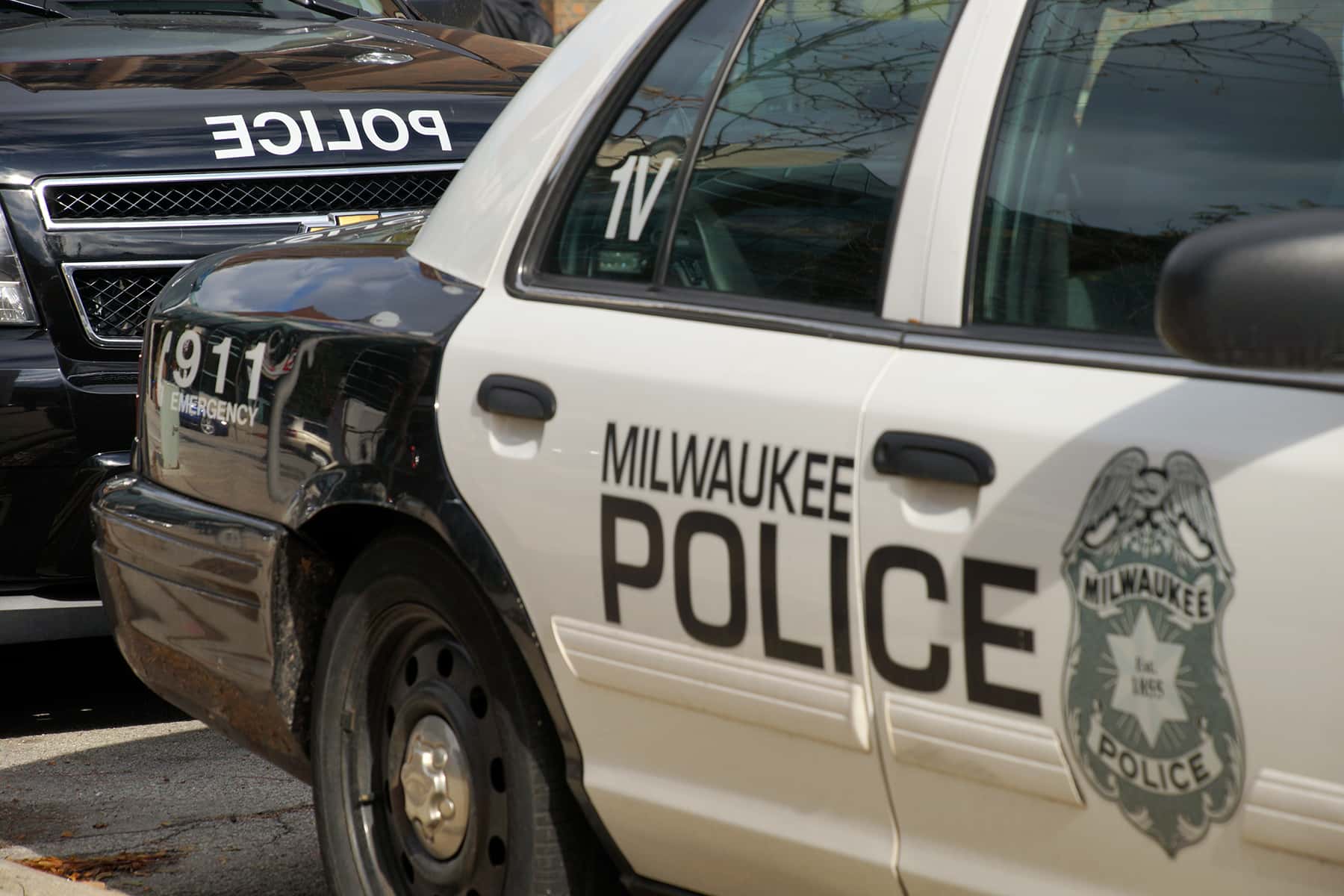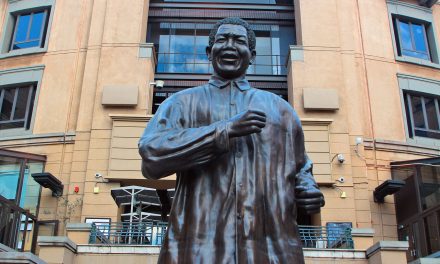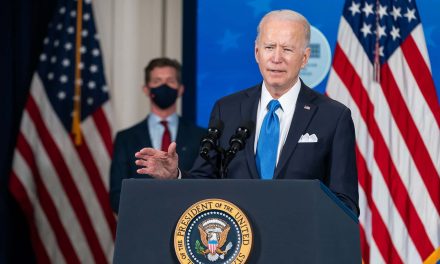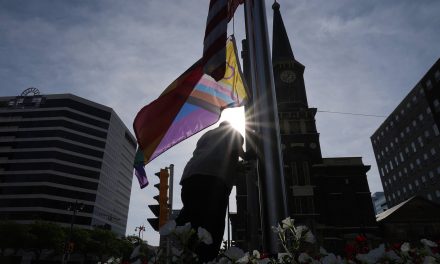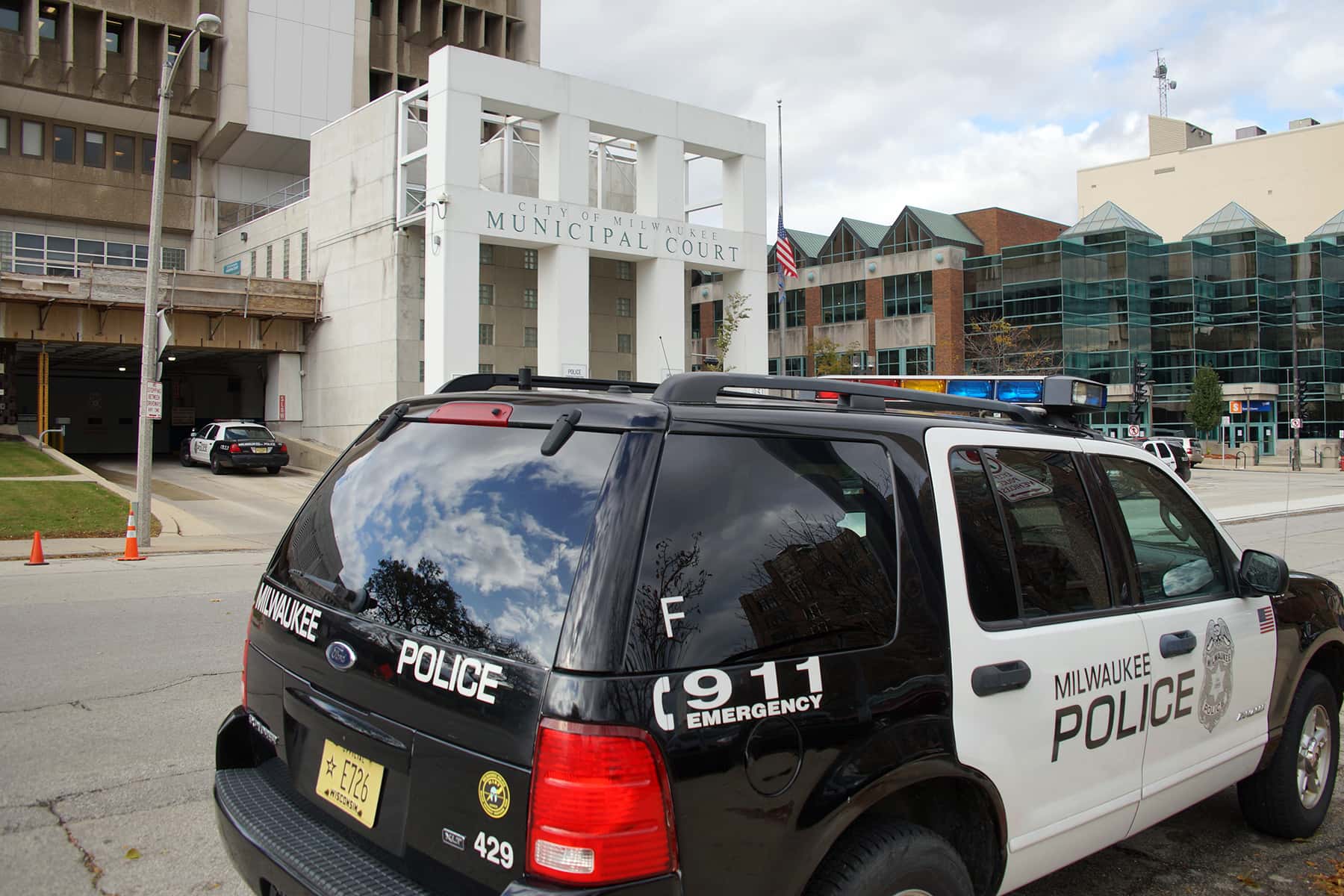
“Though the Defendants successfully established the foundation needed for reforms, our analysis reported here is concerning and behaviors on the street must change in Milwaukee.” – Christine M. Cole Executive Director, Crime and Justice Institute
Those words are from the City of Milwaukee Settlement Agreement Second Annual Report, conducted by the Crime and Justice Institute which has been given the task of monitoring the Milwaukee Police Department’s (MPD) compliance with the terms of the lawsuit brought by the American Civil Liberties Union in the Charles Collins, et al. v. City of Milwaukee, et al case which settled in June 2018.
In the case, a settlement was reached and agreed to after, “The Plaintiffs in that case alleged that there had been racially disparate and unjustified stops, frisks, and other unconstitutional police actions. The Defendants denied those allegations, and maintain that denial in the Settlement Agreement.” Despite this denial by the police department, a report by the Crime and Justice Institute Analysis of 2019 Traffic Stops, Field Interviews, No-Action Encounters, and Frisks found “notable racial and ethnic disparities exist.”
Between the COVID-19 pandemic and the utter mess that the Milwaukee Fire and Police Commission has become, little progress was made during 2020 in the efforts to reform the MPD. Just as background, the City of Milwaukee Fire and Police Commission (FPC) “oversees all aspects of Fire Department and Police Department operations. The Commission sets overall policy while the chief of each department manages daily operations and implements the Commission’s policy direction and goals.” The commissioners are tasked with “disciplining employees for misconduct.” In August they demoted Chief Alfonso Morales from Chief to Captain.
“The chief, effective immediately, is demoted to the rank of captain.” – Steve DeVougas, chair of the Fire and Police Commission.
On December 18 Milwaukee County Judge Christopher Foley ruled that “It is clear this entire process was flawed.” The judge ruled that the disciplinary process must start all over again. The FPC must ensure Morales receives due process this time around since the FPC did not do so in August. In the meantime the FPC had been interviewing candidates to be appointed as new chief of the department. They deadlocked twice, in voting 3-3 for Maj. Malik Aziz and FBI Special Agent Hoyt Mahaley.
Mahaley told the Milwaukee Journal Sentinel, “The city has a dilemma that must be addressed. It is my hope that it will be done expeditiously.” Aziz, told them he “has no comment on the matter until the Executive Director or Chair calls me.”
In essence, we now are in a bind having the current acting chief Assistant Chief Jeffrey Norman, two candidates for chief, retired former Chief Morales’ attorney saying he is Chief based on the ruling by Judge Foley and a city full of residents not currently having a clue who the Chief is right now. It is a mess and an embarrassment to the city.
Mayor Tom Barrett has intimated that the FPC needs major changes. “I think that they have made some serious mistakes. They have an opinion as to what caused them to make those mistakes, and I think that that is something that we have to explore further as to what happened.” Barrett said residents should expect “changes” in the coming months.
The FPC tied 3-3 twice when voting on the two candidates mentioned earlier after commissioner Raymond Robakowski abruptly resigned citing the commission’s dysfunction as his main reason for leaving.
The attempt to break the tie was thwarted when it was discovered that the background check on Amanda Avalos who was nominated by the Mayor and Common Council was done by an outside agency instead of the Milwaukee County Sheriff’s Department as required by law. Common Council President Cavalier Johnson said, “The sheriff’s office has informed us that it will take about two weeks at the very least in order to complete the background check on Ms. Avalos.” He has called for the search to be called off until next summer. He also stated that he wants the FPC to be investigated over this issue. “I want to know if they got faulty legal advice, acted on that and put us in the situations we’re in now.”
It is playing out like a poorly written soap opera. All the while the city has registered the highest number of murders in its’ history this year. We had a number of multiple victim homicides this past year, and a huge increase in the number of domestic violence related homicides, all while dealing with a global pandemic.
After the killing of George Floyd by a Minneapolis police officer on Memorial Day, protests erupted around the world including in Milwaukee. One of the themes that developed during those protests was “Defund the Police” demand by local and national activists. Of course this demand has led to a very divided response locally as well as nationally.
Devin Anderson, lead organizer for LiberateMKE, a coalition calling for a $75 million cut to MPD’s budget that would shift $50 million to public health and $25 million to housing stated in a July interview with WUWM that, “We believe a world without police is possible. Defund is the goal, and divestment is the process.” In July, then Chief Morales penned an op-ed for the Milwaukee Journal Sentinel stating, “We must have real discussions of what ‘defunding the police’ means. I understand budget cuts, and I understand investing in our community. However, I do not understand how defunding improves the underlying issues of social injustices and police brutality.”
Anderson does not agree that the city will be unsafe if the funds are transferred to other needs. “By investing so much in a system that was never meant to keep us safe, that’s leaving no space and no room for the other investments, and it’s hurting us. In some cases, it’s literally killing us.” A 2019 report by the Wisconsin Policy Forum shows that many cities across the country are spending more on police while cutting the number of officers they have over the past ten years.
“Despite the per capita drop in sworn staff in most of the cities, their police spending increased substantially. Violent crime rates also rose, though we are not suggesting a link between those factors.”
As LiberateMKE found when speaking with residents, “participants recommended rerouting $25 million from MPD to community-based violence prevention programs. They also called for bigger investments in opportunities for young people and better housing.” The Office of Violence Prevention’s (OVP) 2017 Blueprint for Peace had previously called for these same reforms. Director of the OVP, Reggie Moore, reflected on this issue with WUWM by saying “We understand that when we look at the production of public safety in our city, it really takes beyond policing and the criminal justice industry, and I think that’s really what this movement and moment is challenging us to think about.”
The proposed budget for 2021 by Mayor Barrett will lead to 120 less officers next year but a budget that will still be about $300 million dollars for MPD, virtually unchanged from 2020. According to Wisconsin Public Radio, “The positions would be lost through attrition and by not holding new police academy classes next year. Barrett said the only new recruits would be 30 officers funded by a federal grant.”
With the new budget, Milwaukee will have 1,682 sworn officers, 206 less than four years ago but the budget allocates funding for 2,732 total employees which is just 96 less than in 2020. The initial budget request by the Mayor called for a total of $315 million for the MPD and the adopted budget cut that to $303.9 million. Within that, $295.3 million has been allocated as operating cost in the budget for the police department. By comparison the last five years the adopted operating budget for MPD has been: $297.4 million (2020); $298.9 million (2019); $293.7 million (2018); $302.1 million (2017); $277.2 million (2016).
Part of what people find problematic is that the amount of money budgeted to the police department has exceed the property tax levy for the city for a number of years. According to the Mayor’s adopted budget, “In the 2021 proposed budget, for the first time since 2016, the police budget will not be higher than the tax levy.” In 2020 45.4% of the city’s general fund appropriation went to the police department. That percentage was 45.7% in 2019 and 47.1% in 2018.
When it comes to what all that money is spent on, it is clear from the last several budgets issued that about 95% of the MPD budget goes to pay for salaries and benefits. Any cuts will by necessity lead to less officers on the streets. The union contracts require those cuts to be made to less senior officers first because of seniority rules in their contracts. So outside of attrition, the losses tend to be young, less experienced officers.
Looking at the staffing and budgets for the MPD we currently spend $108,089.31 per employee of the department. 2017 was the first year we spent over $100,000 per employee. Looking back at the year 2000, the city spent just $51,073.99 per employee which is the equivalent of $77,183.12 per employee in 2020 inflation adjusted dollars. So since 2000 we are spending in real dollars 2.1 times more per employee and 1.4 times more in inflation adjusted dollars.
The 2019 Adopted Plan and Budget Summary states that, “During Mayor Barrett’s tenure, the Milwaukee Police Department budget has risen 24.4% more than the rate of inflation; this equates to $58.5 million more than if the 2004 police budget had been held to inflationary growth.”
One of the concerns expressed by some in the community is that we have seen a huge increase in murders this year and they don’t believe it’s a good time to cut the number of police officers. Prior to this year the number of murders in the city had dropped for four consecutive years from a peak of 145 in 2015 according to FBI Uniform Crime Reports. From 2016-2019 the number of murders were: 141 (2016); 119 (2017); 100 (2018) and 97 (2019). The numbers prior to the peak in 2015 are instructive: 2009 (73); 2010 (95); 2011 (86); 2012 (93); 2013 (103); 2014 (86). That averages out to 89 murders per year for 2009-2014. The number of officers and the size of the budget do not show a correlation to the number of murders increasing or decreasing. More money has not led to less murders any more than less money has led to more murders in the long term. Contrary to the dozens of what I call “copaganda” shows on television, the police do not just magically show up just in time to prevent a murder. Murders take place and then the police show up to investigate and sometime they find the culprit.
This year the numbers of murders in Milwaukee on December 30 was 192 nearly 100 more than at the same time in 2019 according to the Milwaukee Journal Sentinel Homicide tracker. There were multiple instances of multi-victim homicides in Milwaukee in 2020. Back on April 27, five family members (Tiera Thomas, Marcus Stokes, Teresa Thomas, Demetrius Thomas, Lakeitha Stokes) were murdered in one attack. On February 26, five workers (Trevor Wetselaar, Jesus Valle Jr., Gennady Levshetz, Dana Walk, Dale Hudson) at Molson Coors Brewery were shot and killed. On February 22 a young woman (Menshala Pabai) and her girlfriend (Aubrianna Lancaster) were murdered together. on February 8 a young woman (Nyah Chatman) and her three daughters (Amarah Banks, Camaria Banks, Zaniya Ivery) were murdered in a single incident. We only had one multi-victim homicide in 2019 in the city.
It was a tragic year for the city. In 2019 one in five murders was related to domestic violence but those numbers increased dramatically in 2020. According to the Hope Domestic Violence Help website, as of October 26, 78 deaths in Wisconsin were related to domestic violence in 2020, 24 of those victims were in Milwaukee.
As we grapple with this, we must also look at what we are seeing from the MPD that leads to calls for defending the department. Going back to the report by the Crime and Justice Institute, there are some very disturbing issues that have not been properly addressed despite the mandates in place to do so.
“Although it has been two years since the Parties signed the Settlement Agreement, the work of achieving compliance seems an afterthought to all but a small number of people in the City of Milwaukee. It is not integrated into the daily work, strategic planning, and service to the community for all of government. Dedicated professionals work on training, auditing, operational compliance, and yet, they seem to toil without a citywide mandate or the highest-level leadership confirming that this work matters.” – Settlement Agreement Second Annual Report
In a press release in September, the ACLU decried the efforts of both the police department and the city over the lack of progress in two years. “The report indicates that neither the city nor the department as a whole has made compliance with the settlement a priority. Officers are not being adequately supervised, the Fire and Police Commission is not conducting regular audits or providing proper oversight, and proactive police engagement with the community has been slow to materialize.”
The report documented that in 2019, Black people were significantly more likely to be pulled over and to be frisked by police compared with white people and that officers provided documented justification in less than one in four such encounters, continuing a trend that the ACLU documented in multiple reports. There was some improvement in the last quarter of the year when 94 percent of traffic stops had a sufficient, documented justification but in contrast, only 21 percent of frisks had sufficient, documented justification. Blacks were significantly more likely to have a field interview conducted as compared to Whites. Latinos were also overrepresented, being twice as likely to be pulled over than Whites.
One of the requirements that the MPD is non-compliant with is proper documentation of encounters with civilians. Under the court order, “Defendants shall ensure that every traffic stop, field interview, no-action encounter, frisk, and search conducted by any member of the MPD is documented in an electronic, digitized record regardless of the outcome of the encounter.” Not complying with this is seen as evidence of racial profiling by members of the Black and Latino/Hispanic communities. The data from the report tells the alarming story of how members of the Black and Latino/Hispanic communities are treated by the MPD.
“Black drivers and residents are subjected to traffic stops, field interviews, and frisks at significantly higher rates than White drivers and residents. Black drivers are eight times more likely to get stopped than White drivers, Black residents are four times more likely to be subjected to a field interview, and seven times more likely to be subjected to a frisk than White residents of Milwaukee. A deeper analysis of frisks indicates that during a police encounter, Black subjects are two times more likely to be frisked than White subjects, with the disparity largest in Districts 1, 3, and 5…Hispanic/Latino drivers were 2.4 times more likely than White drivers to be subjected to a traffic stop. During a police encounter, Hispanic/Latino subjects were 1.3 times more likely to be frisked than White subjects.”
The report summary concludes that, “Our data analysis reveals much work remains to affect behavior on the street. The Defendants may need to make adjustments to training, for officers and supervisors, to ensure stops, searches, and frisks are all supported by IOARS (individualized, objective, and articulable reasonable suspicion). The stage is being set for the FPC to start the long-awaited audit process that provides additional evidence that behavior on the street is actually changing.”
With the pandemic year laying bear the huge racial and ethnic disparities in the city, it is time we recognize that spending nearly one half of the city’s general fund on the police department has been detrimental to alleviating many of the issues the city is grappling with. We can no longer look at the “Defund the Police” calls as something that makes no sense or as an effort by all activists to eliminate the police department.
These calls to spend more money on the critical issues the community faces are not new. There has been a consistent call by the Black community in Milwaukee to put resources into investing in our part of town instead of spending billions to make downtown more attractive. A ten minute drive north on Fond du Lac Avenue from the Fiserv Forum shows how ridiculous it is to spend taxpayer dollars on a sports complex owned by billionaires while ignoring what the disinvestment in the central city has led to.
Fifty years ago in Milwaukee, Blacks had the seventh highest median family income for Blacks in the country. Our median family income at that time was the equivalent of nearly $50,000 in today’s money but is less than $28,000 today. In 1970, 43 percent of Blacks including 52 percent of Black men worked in the thriving manufacturing base in Milwaukee. More than 51,000 manufacturing jobs have disappeared since 1982 and the Black community has suffered in a way that no other community has in the city.
We depended on those jobs much more so than any other group and no other city had higher number of Blacks working in blue collars jobs in 1970. The Black poverty rate in Milwaukee was 22 percent below the national average for blacks at that time, but is closer to 38 percent above the national average for Blacks now. The shift in the fortunes of the Black community has largely contributed to the disparities we see today. Disinvestment by the city and state has exacerbated the problems we face.
Just 20 years ago the police operating budget was only $149.8 million dollars in Milwaukee while the budgeted staff was 2,933 people. Now we are dealing with an operating budget of $295.3 and a total of 2,732 personnel. In the past twenty years $5.1 billion of our tax dollars have gone to the police department operating budget. Let’s make sure we don’t do the same moving forward.
Defunding police by shifting funds to much needed programs that get people back on their feet after years of knocking them down is what Milwaukee needs. When people are doing well financially crime is negligible. A 1975 survey taken of city residents found that only a small percentage saw crime as an issue. The city was a safe place because people were financially stable. The Wisconsin prison system had only about 3,000 prisoners versus the 23,000 plus we saw at the beginning 2020.
Put people in a place where they can support themselves and their families with family supporting wage jobs and we won’t need the police as much. That is common sense. Even former Chief Flynn recognized the police are not qualified to deal with the social ills of the community. That is not their job.
© Photo
Lee Matz

